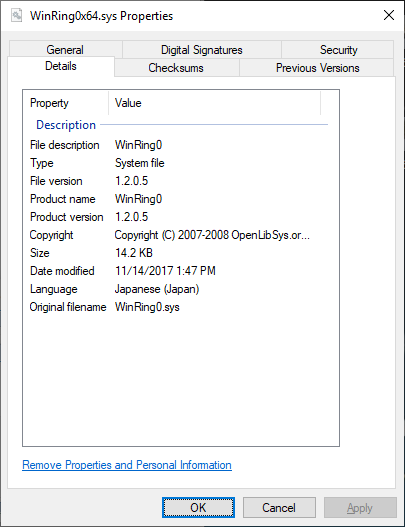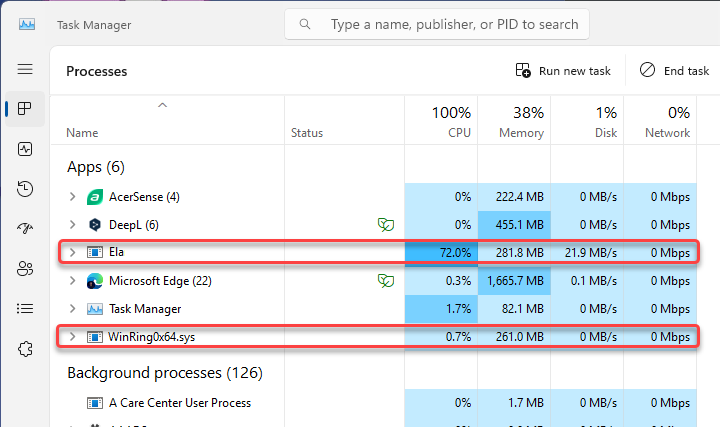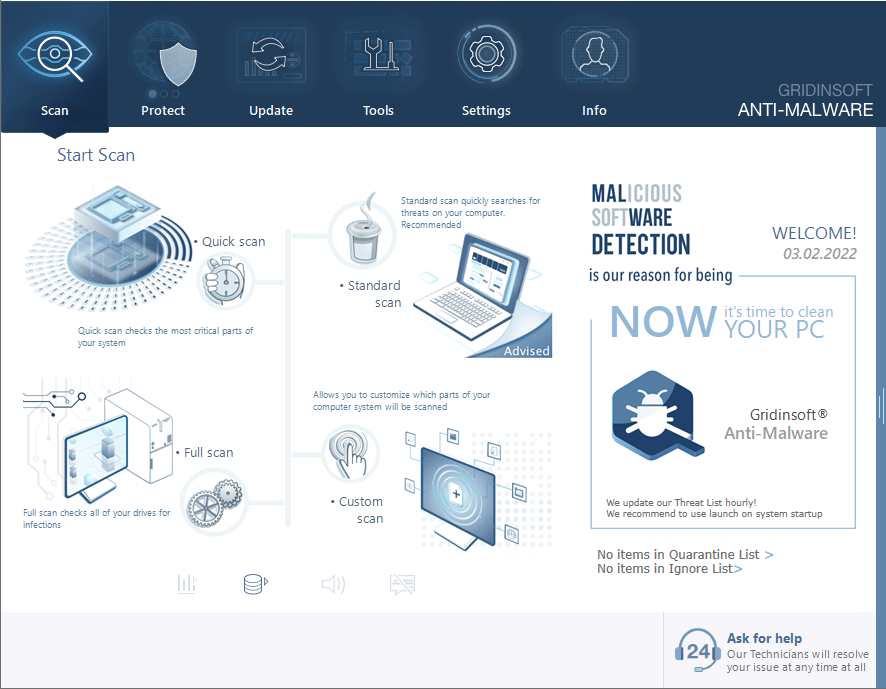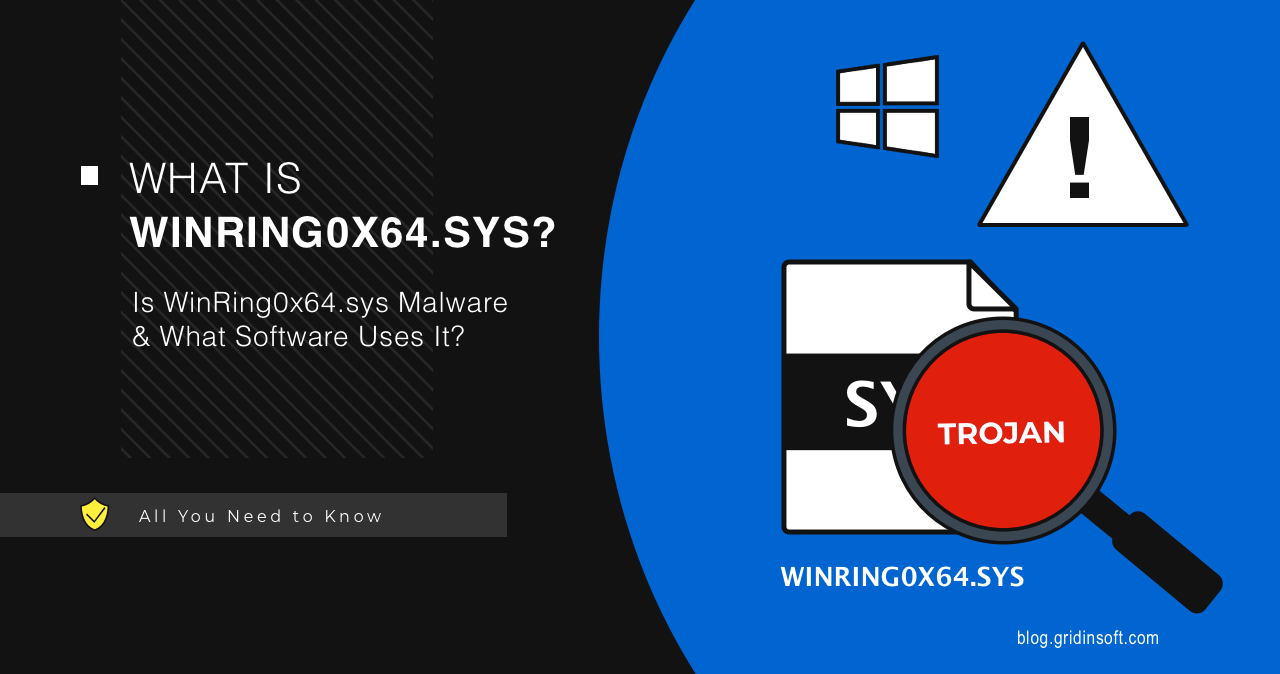WinRing0x64.sys is a low-level driver that provides direct hardware access for legitimate applications like hardware monitoring tools and RGB lighting controllers. While not inherently malicious, this driver can be exploited by malware due to its privileged access to system components. This comprehensive guide explains what WinRing0x64.sys is, which software uses it, how to identify legitimate vs. malicious instances, and provides detailed removal instructions when necessary.
| File Name | WinRing0x64.sys |
|---|---|
| Type | Device Driver / System File |
| Developer | Various (including OpenLibSys, Noriyuki MIYAZAKI) |
| Common Locations | C:\Windows\System32\drivers\ C:\Program Files\[Software Name]\ C:\Users\[Username]\AppData\ |
| Legitimate Usage | Hardware monitoring, overclocking tools, RGB lighting control |
| Risk Level | Low (when from legitimate sources) High (when exploited by malware) |
| Can Be Removed? | Yes, by uninstalling associated software |
What Is WinRing0x64.sys?
WinRing0x64.sys is a specialized system driver designed to provide applications with direct low-level access to hardware components. This driver operates in Ring 0 (kernel mode) – the most privileged level in the Windows operating system architecture, which explains its name. By bypassing the standard APIs provided by Windows, it allows software to interact directly with hardware for specific functions that require privileged access.
The driver originated from the OpenLibSys project, but various software developers have created their own versions. It’s primarily used for legitimate purposes such as:
- Hardware monitoring (CPU/GPU temperatures, fan speeds)
- Graphics card overclocking
- RGB lighting control for PC components
- System diagnostics and benchmarking
- Advanced power management

When legitimately installed, this driver is typically digitally signed and placed in standard system directories. However, its powerful capabilities make it an attractive target for malware authors who may exploit it or create malicious copies that mimic its functionality.
What Legitimate Software Uses WinRing0x64.sys?
Several reputable software applications rely on WinRing0x64.sys to function properly. If you have any of these programs installed, finding this driver on your system is expected and normal:
| Software Category | Program Names | Purpose |
|---|---|---|
| Hardware Monitoring | CPU-Z, HWiNFO, AIDA64, HWMonitor | Reading system temperatures, voltages, and fan speeds |
| Overclocking Tools | MSI Afterburner, EVGA Precision X1, AMD Ryzen Master | Adjusting GPU/CPU clock speeds and voltages |
| RGB Lighting Control | Corsair iCUE, MSI Mystic Light, ASUS Aura Sync | Controlling RGB lighting effects on PC components |
| Diagnostic Tools | Intel Processor Diagnostic Tool, PassMark PerformanceTest | Testing and diagnosing system hardware |
| Developer Tools | RWEverything, Noriyuki MIYAZAKI tools | Low-level hardware access for development purposes |
Since the algorithm of driver usage is similar to some malware techniques, security software may occasionally flag WinRing0x64.sys as suspicious. This happens because both legitimate tools and malware may need to access hardware directly, making it difficult for security programs to distinguish between benign and malicious usage patterns.
Security Concerns with WinRing0x64.sys
While WinRing0x64.sys is not inherently malicious, its powerful capabilities create potential security vulnerabilities:
- Privileged Access: The kernel-level access that makes this driver useful also makes it dangerous if compromised
- Exploitation Vector: Malware developers can use the driver as an exploitation tool to bypass security measures
- Unsigned Copies: Malicious versions may lack proper digital signatures or use stolen certificates
- Resource Usage: When exploited by malware (especially cryptominers), the driver can facilitate excessive resource consumption
In October 2019, CVE-2019-18845 was issued for a vulnerability in WinRing0.sys (an earlier version of the driver) that could allow attackers to execute code with kernel privileges. This further illustrates why security researchers are cautious about such powerful drivers.
How to Distinguish Between Legitimate and Malicious Instances
Determining whether WinRing0x64.sys on your system is legitimate or malicious requires investigating several factors:
Signs of Legitimate Usage
- You have installed hardware monitoring, overclocking, or RGB lighting software
- The driver is digitally signed by a reputable company
- The file is located in a standard system driver directory or within a known application folder
- System resource usage remains normal
- The driver was installed alongside recognized legitimate software
Red Flags for Malicious Usage
- The driver appeared without installing any related legitimate software
- WinRing0x64.sys is running but you don’t have any hardware monitoring or RGB control applications
- The file lacks a digital signature or has an invalid signature
- Abnormal system resource usage (high CPU, memory, or disk activity)
- The driver is located in an unusual directory
- Security software reports other malware detections alongside it

If you’re unsure about the nature of WinRing0x64.sys on your system, consider these scenarios:
- Scenario 1: You’ve installed EVGA Precision X1 for your graphics card, and WinRing0x64.sys is flagged by your antivirus. This is likely a false positive.
- Scenario 2: You have a basic laptop with integrated graphics, no RGB components, and haven’t installed any monitoring tools, yet WinRing0x64.sys appears in Task Manager. This is suspicious and warrants investigation.
How to Check if WinRing0x64.sys Is Legitimate
To determine if the WinRing0x64.sys on your system is legitimate, follow these steps:
- Verify File Location: Check where the file is stored. Legitimate versions typically reside in:
- C:\Windows\System32\drivers\
- Installation directories of hardware utilities (e.g., C:\Program Files\EVGA Precision X1\)
- Check Digital Signature: Right-click the file, select Properties, and go to the Digital Signatures tab. Verify that:
- The file is signed by a recognized publisher
- The signature is valid and hasn’t expired
- Review Associated Software: Identify which program installed the driver by checking:
- Recently installed applications
- Control Panel > Programs and Features
- Windows Event Log for recent driver installations
- Monitor Resource Usage: Keep an eye on system performance when WinRing0x64.sys is running:
- Open Task Manager to monitor CPU and memory usage
- Check if related processes are consuming excessive resources
When and How to Remove WinRing0x64.sys
WinRing0x64.sys is not a critical Windows component and can be safely removed if needed. However, removing it directly is not recommended. Instead, you should uninstall the software that installed it, which will properly remove the driver in most cases.
When to Consider Removal
- You’ve confirmed the driver is being used maliciously
- You no longer need the software that installed it
- The driver is causing system instability or conflicts
- You want to reduce potential security risks
Method 1: Remove Associated Software (Recommended)
- Press Win + I to open Settings
- Go to Apps > Apps & features
- Search for and select the software that installed WinRing0x64.sys (e.g., EVGA Precision, Corsair iCUE, CPU-Z)
- Click Uninstall and follow the prompts
- Restart your computer to complete the removal process
Method 2: Disable the Driver (Advanced Users)
- Press Win + R, type “services.msc” and press Enter
- Search for services related to the driver or associated software
- Right-click the service and select Properties
- Change the Startup type to “Disabled”
- Click Stop to halt the service
- Click Apply and OK
- Restart your computer
Method 3: Remove Malicious Instances with Anti-Malware Software
If you suspect that WinRing0x64.sys on your system is malicious or has been exploited, follow these steps to remove it:
- Boot your computer in Safe Mode with Networking:
- Press Win + I to open Settings
- Go to Update & Security > Recovery
- Under Advanced startup, click Restart now
- Select Troubleshoot > Advanced options > Startup Settings > Restart
- After restart, press F5 to select Safe Mode with Networking
- Download and install GridinSoft Anti-Malware
- Update the malware definitions
- Perform a full system scan
- Allow the software to quarantine and remove detected threats
- Restart your computer in normal mode
- Run another scan to ensure all threats have been removed


Prevention Tips and Best Practices
To minimize risks associated with WinRing0x64.sys and similar powerful drivers, follow these best practices:
- Download software only from official sources – Avoid third-party download sites which may bundle malware with legitimate applications
- Keep your operating system and drivers updated – This ensures you have the latest security patches for known vulnerabilities
- Use reputable security software – A good antivirus/anti-malware solution can detect suspicious driver activity
- Check driver signatures – Be wary of unsigned or improperly signed drivers
- Monitor system performance – Unusual resource consumption could indicate exploitation
- Limit privileged software – Only install hardware management tools when necessary
- Regularly audit installed software – Remove applications you no longer use to reduce your attack surface
Conclusion
WinRing0x64.sys itself is not malicious and serves legitimate purposes for hardware monitoring, overclocking, and RGB control software. However, its powerful low-level access makes it a potential target for exploitation by malware authors. By understanding its purpose, recognizing legitimate uses, and knowing how to identify suspicious instances, you can better protect your system.
If you suspect malicious use of WinRing0x64.sys on your system, don’t hesitate to perform a thorough scan with reliable security software. In most cases, proper removal involves uninstalling the associated application rather than attempting to delete the driver file directly.




